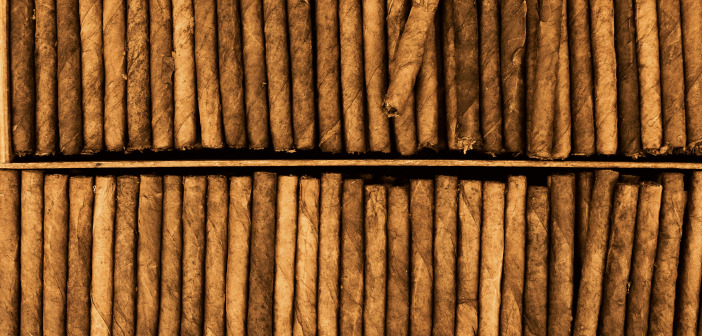Cigars come in many shapes, sizes and flavors. According to Buitrago Cigars, “By definition, a cigar is a tightly-rolled bundle of dried and fermented tobacco leaves. There are names used by the tobacco industry to categorize cigars by type.” What follows is a brief exploration into the world of cigars, the different types of them, and how cigars are classified.
Cigar History
The explorer Christopher Columbus is frequently credited with the introduction of tobacco to the old world after encountering it for the first time on the island of Hispaniola (the Dominican Republic and Haiti). His men reported observing Cuban locals smoking dried and rolled-up tobacco leaves while staying on that island. Across time, European sailors adopted the habit of smoking rolls of tobacco leaves to pass the time. Eventually, cigar smoking spread across Spain, Portugal and the rest of Europe. After Sir Walter Raleigh’s voyages to the Americas, cigar tobacco was regarded as a cash crop in America.
Classification
Cigars are generally classified by shape and size. There are many names for the different types of cigars, but the more common terms that one should be familiar with in order to speak credibly on the subject are listed here.
The shape of a cigar does not influence or signal to you the strength of the tobacco, the taste of it or the quality of it. The most common cigar shape today is called the “Parejo” (also known as “Corona”). This is the classic cigar, straight-sided with an open end (“foot”) for lighting. The opposite end, or “head” most often needs to be cut before smoking.
The Panetela is a long, thin cigar whose popularity has diminished in recent years. It remains a stately and elegant fixture in the hands of gentlemen smokers everywhere. The Torpedo is a cigar that features a closed foot and a head that is tapered to a point. This type of cigar bulges in the middle.
A growing number of cigar manufacturers today are producing irregular-shaped cigars. These are called “figurados.” They include any smoke that is not in the shape of a straight cylinder. Figurados are commonly of the highest quality and considered more valuable as they are more difficult to make by hand.
Beneath The Wrapper
Binder and filler tobacco leaves are generally thicker and hardier than the wrapper leaf which surrounds it. By blending different varieties of binder and filler tobacco, cigar makers can create distinctive flavor profiles for their products. According to Wikipedia, fatter cigars, that contain more filler leaves, permit greater latitude for the creation of more complex flavors. Apart from the variety of tobacco leaves used, the nation of origin is a determining factor influencing the taste of a cigar. Different growing environments produce distinctive flavors in the tobacco leaves and account for this factor.
Forbidden Fruit: The Appeal of Cuban Cigars
A recent agreement between the U.S. and Cuba aimed at promoting travel and commerce between the two nations has made it legal for American tourists to take home with them up to $100 worth of high-end native cigars from Cuba. Rum and cigars are the two most sought-after Cuban exports. Although travelers can buy these items for personal consumption, they cannot be sold commercially in the United States. Perhaps all of this will change if and when the U.S. embargo for Cuban goods is lifted. According to the New York Times, the loss of its “forbidden fruit” status may actually work against the long-standing appeal of Cuban cigars. This premise is given further weight by certain experts who believe that cigars made in Nicaragua, the Dominican Republic and Honduras are rapidly catching up to Cubans in quality and desirability.
There are many opinions concerning what is the best type of cigar to smoke. Each of these opinions is of course, driven by personal taste. What cigar smokers all agree on however, is that the wrapper, the blend, and the country of origin all matter when it comes to a cigar’s performance and taste. Beginners to cigar smoking are urged to start off with milder cigars, and then try bolder blends as their tastes evolve. Also, one should always enjoy their cigar when they have the time to relax. There is nothing in life so disappointing as having to cut short the time spent smoking a good cigar.




